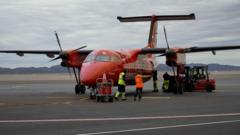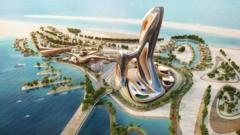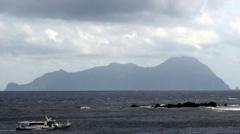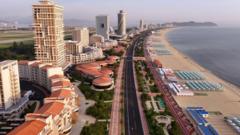Greenland is on the brink of a transformation with the upcoming opening of new international airports, including Nuuk International, which will enable larger aircraft to land, vastly improving accessibility and potentially invigorating the local economy.
Groundbreaking Airports to Transform Greenland’s Accessibility and Economy

Groundbreaking Airports to Transform Greenland’s Accessibility and Economy
New international airports in Greenland set to reshape tourism and trade dynamics.
In a significant advancement for travel and commerce, Greenland's capital, Nuuk, is poised to unveil its first international airport, ushering in an era of larger aircraft operations and direct connections to the US and Europe. This initiative marks the beginning of three major airport developments aimed at enhancing the accessibility of the Arctic territory, which is currently limited to smaller planes.
Nuuk, a picturesque town of 18,000 residents nestled along the southwestern coast, has long been constrained by its remote air travel options. Until now, international travelers had to fly on small propeller planes to Kangerlussuaq, a former military airport, located 200 miles (319 km) north of the capital for bigger aircraft. The new international airport, slated for completion by late November, features an upgraded runway and a state-of-the-art terminal, allowing direct flights from Copenhagen and, starting next summer, New York City.
Jens Lauridsen, CEO of Greenland Airports, expressed optimism about the transformative potential of this project. “I think it will be a big impact. I’m sure we will see a surge in tourism and significant changes,” he stated. Meanwhile, local residents, like a young Nuuk resident who shared their excitement about the newfound opportunity for international travel, echo these sentiments.
The ambitious airport projects not only target tourism growth but also aim to streamline trade logistics. By 2026, a second international airport is scheduled to open in Ilulissat, Greenland's popular tourist destination known for its stunning icebergs. A new regional airport in Qaqortoq, the largest town in southern Greenland, is also planned.
Jacob Nitter Sorensen, CEO of Air Greenland, highlighted the importance of Nuuk International for the airline industry. He noted that with increased travel efficiency, potential new routes to Europe and North America could emerge, enabling ticket prices to decrease further. Competition from larger international airlines is anticipated, but the strategic geographic positioning of Nuuk makes it an attractive destination for travelers.
The construction of Nuuk International Airport involved extensive work to extend the runway and implement advanced landing technologies suited for Greenland’s challenging weather conditions. Despite initial public skepticism regarding costs and environmental concerns, widespread support has emerged as the project nears its final stages.
Moreover, the financial backing of the Danish government, in response to interest from Chinese investors, raised the project's profile. Javier Arnaut, head of Arctic social science at Greenland University, pointed out Denmark's provided attractive loan offers compared to potential investments from China.
While the financial and economic prospects of the new airports are promising, some residents remain apprehensive about the impact of increased air traffic on quiet local life. Karen Motzfeldt, a Nuuk resident, noted the mix of opinions surrounding the airport, but acknowledged its potential benefits.
Greenland's economy relies heavily on fishing and public sector jobs, with hopes that improved infrastructure will stimulate growth in mining and tourism sectors. As the number of tourists visiting Greenland surged by 36.5% last year, there are plans to enhance visitor experiences while distributing tourist traffic across the region.
Preparing for this influx, local tourism businesses are investing in facilities and resources. One of the co-owners of Inuk Hostel, Maren-Louise Paulsen Kristensen, expressed enthusiasm about the anticipated surge in tourism, while also highlighting the need for expanded accommodation to meet growing demand.
The promise of enhanced connectivity and economic growth through these three airport developments is poised to fundamentally alter the landscape of Greenland. However, as Business Minister Naaja Nathanielsen cautioned, the transformation will require adjustments both socially and environmentally to ensure a sustainable transition into "a modern Greenland."





















